Papers by Marcia Thereza Couto
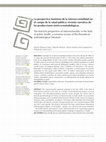
Salud Colectiva, 2019
RESUMEN El abordaje de la interseccionalidad emergió a fines de la década de 1980, en el campo de... more RESUMEN El abordaje de la interseccionalidad emergió a fines de la década de 1980, en el campo del activismo feminista negro en EEUU, como crítica a los análisis unidimensio-nales de las desigualdades sociales. Esta revisión narrativa descriptivo-analítica presenta el estado actual de la inclusión teórico-metodológica de la interseccionalidad en la salud pública. Se consultaron siete bases de bibliografía científica: Web of Science, Embase, Cinahl, Scopus, Sociological Abstracts, Lilacs y Medline, y se obtuvieron 1.763 artículos. Eliminados los duplicados y leídos los títulos y resúmenes, se seleccionaron 30 artículos producidos en cinco países entre 2006 y 2017. El análisis, estructurado en tres temas (debates teórico-metodológicos; marcadores sociales-género, raza, etnicidad, orientación sexual-; y políticas y prácticas de salud), muestra que la interseccionalidad es un recurso analítico prometedor para la comprensión y el enfrentamiento del desafío global de las desigualdades en salud. ABSTRACT The intersectionality approach emerged in the late 1990s in the field of black feminist activism in the USA, as a critique of one-dimensional analyses of social inequalities. This descriptive-analytical narrative review presents the current state of theoretical-methodological inclusion of intersectionality in public health. Seven scientific literature databases were consulted: Web of Science, Embase, Cinahl, Scopus, Sociological Abstracts, Lilacs, and Medline, resulting in 1763 papers. After duplicates were eliminated and the titles and abstracts screened, 30 papers produced in five countries between 2006 and 2017 were selected. The analysis, structured into three central themes (theoretical-methodological debates, social markers-gender, race, ethnicity and sexual orientation-and health policies and practices), shows intersectionality to be a promising analytical resource for understanding and facing the global challenge of inequalities in health.

Interface, 2019
O aborto é um importante tema sob a perspectiva da saúde pública e permeia a prática de diversas ... more O aborto é um importante tema sob a perspectiva da saúde pública e permeia a prática de diversas especialidades. Enfocamos a assistência a processos de abortamento e sua relação com a formação recebida em Ginecologia e Obstetrícia (GO) e Medicina de Família e Comunidade (MFC) por residentes de duas faculdades públicas paulistas. A pesquisa seguiu a metodologia qualitativa, e a produção dos dados empíricos se norteou pela técnica de entrevista em profundidade (13 residentes). Os residentes em GO relatam pautar-se nas experiências práticas para condução dos casos de abortamento. Os residentes em MFC relatam discussões sobre o tema e suas conexões com questões de gênero. O conhecimento clínico, o desenvolvimento de habilidades e técnicas e a maior inserção da abordagem de gênero na formação se revelam fundamentais para o exercício do cuidado integral às mulheres em processo de abortamento.

Salud Colectiva, 2019
The intersectionality approach emerged in the late 1990s in the field of black feminist activism ... more The intersectionality approach emerged in the late 1990s in the field of black feminist activism in the USA, as a critique of one-dimensional analyses of social inequalities. This descriptive-analytical narrative review presents the current state of theoretical-methodological inclusion of intersectionality in public health. Seven scientific literature databases were consulted: Web of Science, Embase, Cinahl, Scopus, Sociological Abstracts, Lilacs, and Medline, resulting in 1763 papers. After duplicates were eliminated and the titles and abstracts screened, 30 papers produced in five countries between 2006 and 2017 were selected. The analysis, structured into three central themes (theoretical-methodolo-gical debates, social markers-gender, race, ethnicity and sexual orientation-and health policies and practices), shows intersectionality to be a promising analytical resource for understanding and facing the global challenge of inequalities in health.
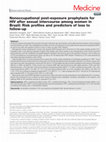
Medicine, 2019
Access to antiretroviral-based HIV prevention has been marked by sex asymmetries, and its effecti... more Access to antiretroviral-based HIV prevention has been marked by sex asymmetries, and its effectiveness has been compromised by low clinical follow-up rates. We investigated risk profiles of women who received nonoccupational post-exposure prophylaxis (nPEP), as well as the rates and predictive factors of loss to follow-up after nPEP initiation.
Retrospective study evaluating 501 women who received nPEP between 2014 and 2015 at 5 HIV centers (testing centers-VCT, outpatient clinics, and infectious diseases hospital). Risk profiles were drawn based on the characteristics of the women and their sexual partners, and then stratified by sociodemographic indicators and previous use of HIV prevention services. Loss to follow-up (LTFU) was defined as not presenting for follow-up visits or for HIV testing after nPEP initiation. Predictors of LTFU were analyzed by calculating adjusted prevalence ratios (aPRs).
Approximately 90% of women had sexual encounters that met the criteria established in the Brazilian guidelines for nPEP. Those who declared to be sex workers (26.5%) or drug users (19.2%) had the highest social vulnerability indicators. In contrast, women who had intercourse with casual partners of unknown HIV risk (42.7%) had higher education and less experience with previous HIV testing (89.3%) or nPEP use (98.6%). Of the women who received nPEP after sexual intercourse with stable partners, 75.8% had HIV-infected partners. LTFU rate was 72.8% and predictors included being Black (aPR = 1.15, 95% confidence interval [CI]: 1.03–1.30), using drugs/alcohol (aPR = 1.15, 95% CI: 1.01–1.32) and having received nPEP at an HIV outpatient clinic (aPR = 1.35, 95% CI: 1.20–1.51) or at an infectious diseases hospital (aPR = 1.37, 95% CI: 1.11–1.69) compared with a VCT. The risk of LTFU declined as age increased (aPR 41–59 years = 0.80, 95% CI: 0.68–0.96).
Most women who used nPEP had higher socioeconomic status and were not part of populations most affected by HIV. In contrast, factors that contribute to loss to follow-up were: having increased social vulnerability; increased vulnerability to HIV infection; and seeking nPEP at HIV treatment services as opposed to at a VCT.

Salud Colectiva, 2019
RESUMEN La masculinidad hegemónica distancia a los hombres heterosexuales activos de las respuest... more RESUMEN La masculinidad hegemónica distancia a los hombres heterosexuales activos de las respuestas a la epidemia de sida. Sin embargo, con el paradigma de la prevención combinada, la profilaxis posexposición sexual hace posible nuevas formas de gestionar los riesgos de infección, al tiempo que trae nuevos desafíos. El objetivo de este artículo es, a la luz de la perspectiva de género y de las masculinidades, discutir cómo los hombres heterosexuales activos perciben su riesgo frente al VIH, cómo manejan los métodos y estra-tegias de prevención, incluyendo la profilaxis posexposición sexual. El estudio de abordaje cualitativo entrevistó 16 hombres heterosexuales activos en cinco servicios de salud de diferentes ciudades brasileñas. El análisis señala que el uso del condón, principal método de prevención, fue condicionado a factores subjetivos y contextuales; y su fallo se destaca como el principal motivo de búsqueda de la profilaxis posexposición sexual. Los ideales de masculinidad hegemónica penetraron los discursos de percepción y gestión de riesgo en el actual contexto de la epidemia de sida.
ABSTRACT Hegemonic masculinity has distanced heterosexually active men from the responses to the HIV epidemic. However, with the combined prevention paradigm, post-exposure prophylaxis offers new ways to manage the risks of HIV infection, while at the same time bringing about new challenges. The aim of this paper is to discuss-through the lens of gender and masculinities-how heterosexually active men perceive their HIV risk and how they manage prevention methods and strategies, including post-exposure prophylaxis. Employing qualitative methods, 16 heterosexually active men in five health services from different Brazilian cities were interviewed. The analysis indicates that condom use-the main prevention method-was conditioned by subjective and contextual factors, and its failure stands out as the primary reason for seeking out post-exposure prophylaxis. We argue that ideals of hegemonic masculinity permeate perceptions and risk management discourses in the current context of the HIV/AIDS epidemic.

Cadernos de gênero e Diversidade, 2019
O referencial teórico e legal de direitos reprodutivos brasileiros foram delineados a partir dos ... more O referencial teórico e legal de direitos reprodutivos brasileiros foram delineados a partir dos preceitos da Organização Mundial da Saúde, na perspectiva de extrapolar os aspectos biomédicos alcançando os determinantes sociais do processo saúde-doença e das relações de gênero. A temática do aborto, criminalizado no país, está inserida no debate e implementação das normas e condutas para os profissionais de saúde, incluindo a equipe de enfermagem. Este artigo objetiva explicitar concepções de trabalhadoras da enfermagem de uma maternidade pública paulistana acerca dos impactos do aborto (legal/inseguro) e desfechos reprodutivos relacionados a este sobre seu cotidiano do trabalho. Trata-se de investigação qualitativa, realizada entre 2016 e 2017, com uso de observações participantes e dez entrevistas em profundidade. O conjunto desse material empírico foi analisado por técnica de triangulação de métodos e o processo analítico foi desenvolvido sob referencial conceitual hermenêutico-filosófico dando origem a duas categorias temáticas: “A enfermagem tem sexo”: contextualizando o serviço investigado; O aborto provocado e os desfechos reprodutivos a ele associados Foi possível depreender que as trabalhadoras da enfermagem tinham dificuldade em lidar com o aborto, sinalizando os desafios da superlotação, poucos funcionários e desamparo técnico/psicológico que permeavam esse enfrentamento. Explicitaram julgamentos controversos frente à temática, ora solidários, ora pejorativos. Conclui-se que a experiência cotidiana de trabalho em contextos agravados pela carência de recursos materiais e suporte psicológico era fonte de angústia e desgaste para as entrevistadas e se faz necessário desvelar suas concepções sobre o aborto para efetivação do cuidado pautado na humanização.
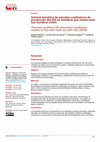
Colombia Médica, 2020
Background:
Qualitative studies on HIV prevention strategies and methods among men who have sex ... more Background:
Qualitative studies on HIV prevention strategies and methods among men who have sex with men (MSM) allow identify knowledge gaps and improve preventive actions.
Objective:
To make a thematic synthesis of the scientific productions that use the qualitative methodology in the strategies and methods of HIV prevention area among MSM.
Methods:
We conducted a literature review following the guidelines of the ENTREQ protocol. The analysis included 48 empirical studies published in Portuguese, English and Spanish between 2001 and 2018 available in the Medline, Embase, Scielo, Scopus, Bireme and Web of Science databases.
Results:
Where an increased production in the last six years and concentration in northern countries. Seven prevention methods were part of the study, with emphasis on pre-exposure prophylaxis, testing, condoms and behavioral strategies. The main topics discussed were stigma and support and care networks.
Conclusion:
we notice that an increasing production on prevention in the men who have sex with men segment results from the emergence of multiple preventive methods and strategies and their combined actions beyond the star role of condoms.
Salud Colectiva, 2020
Editorial
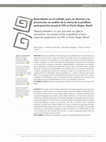
Salud Colectiva, 2020
Buscamos identificar los desafíos para la implementación de la profilaxis posexposición sexual al... more Buscamos identificar los desafíos para la implementación de la profilaxis posexposición sexual al VIH, a partir de analizar el accionar de las y los profesionales de la salud en un servicio de salud pública en Porto Alegre, Rio Grande do Sul, Brasil. Desde un enfoque cualitativo, con técnicas de observación etnográfica y entrevistas en profundidad, se encontró que los factores contextuales, organizacionales e individuales eran desafíos para implementar la profilaxis posexposición sexual al VIH. Las barreras para su implementación incluyeron el contexto histórico de la estructuración y la actuación del servicio, la falta de capacitación y/o educación continua en salud, y las concepciones de las y los profesionales de la salud (ideas sobre la estrategia en sí, y sobre las personas que buscan PEP). Se concluye que existe la necesidad de mayor atención al universo de servicios especializados en ITS/VIH/sida y a las y los profesionales que componen estos servicios, a fin de garantizar una mayor efectividad en el acceso a la estrategia a nivel local.
Saude e Sociedade, 2018
The present study maps repertories related to sexuality and reproduction present in Brazilian mal... more The present study maps repertories related to sexuality and reproduction present in Brazilian male health policy. Based on Gender Studies, Foucauldian thinking and Collective Health studies, the National Men’s Health Policy implementation document was analyzed, as well as documents related to is construction, and publications on the pages of the social network Facebook “Health of Man-Ministry of Health” and “São Paulo Municipal Health Department”. It was observed that sexuality in its broad sense is not the focus of these documents, which emphasize sexual potency instead. Despite some efforts, there was no full incorporation of egalitarian accountability discourses for reproduction and parenting. There are still actions needed to work against a resistance to greater sexual and reproductive freedoms and equality.

Revista Interface, 2019
Medical training and abortion care from the perspective of residents from two public universities... more Medical training and abortion care from the perspective of residents from two public universities in São Paulo, Brazil (abstract: p. 15) Formación médica y asistencia a los procesos de aborto: la perspectiva de residentes de dos universidades públicas en São Paulo, Brasil (resumen: p. 15) O aborto é um importante tema sob a perspectiva da saúde pública e permeia a prática de diversas especialidades. Enfocamos a assistência a processos de abortamento e sua relação com a formação recebida em Ginecologia e Obstetrícia (GO) e Medicina de Família e Comunidade (MFC) por residentes de duas faculdades públicas paulistas. A pesquisa seguiu a metodologia qualitativa, e a produção dos dados empíricos se norteou pela técnica de entrevista em profundidade (13 residentes). Os residentes em GO relatam pautar-se nas experiências práticas para condução dos casos de abortamento. Os residentes em MFC relatam discussões sobre o tema e suas conexões com questões de gênero. O conhecimento clínico, o desenvolvimento de habilidades e técnicas e a maior inserção da abordagem de gênero na formação se revelam fundamentais para o exercício do cuidado integral às mulheres em processo de abortamento.

Salud Colectiva, 2019
El abordaje de la interseccionalidad emergió a fines de la década de 1980, en el campo del activi... more El abordaje de la interseccionalidad emergió a fines de la década de 1980, en el campo del activismo feminista negro en EEUU, como crítica a los análisis unidimensionales de las desigualdades sociales. Esta revisión narrativa descriptivo-analítica presenta el estado actual de la inclusión teórico-metodológica de la interseccionalidad en la salud pública. Se consultaron siete bases de bibliografía científica: Web of Science, Embase, Cinahl, Scopus, Sociological Abstracts, Lilacs y Medline, y se obtuvieron 1.763 artículos. Eliminados los duplicados y leídos los títulos y resúmenes, se seleccionaron 30 artículos producidos en cinco países entre 2006 y 2017. El análisis, estructurado en tres temas (debates teórico-metodológicos; marcadores sociales –género, raza, etnicidad, orientación sexual–; y políticas y prácticas de salud), muestra que la interseccionalidad es un recurso analítico prometedor para la comprensión y el enfrentamiento del desafío global de las desigualdades en salud.

Medicine, 2019
Access to antiretroviral-based HIV prevention has been marked by sex asymmetries, and its effecti... more Access to antiretroviral-based HIV prevention has been marked by sex asymmetries, and its effectiveness has been compromised by low clinical follow-up rates. We investigated risk profiles of women who received nonoccupational post-exposure prophylaxis (nPEP), as well as the rates and predictive factors of loss to follow-up after nPEP initiation.
Retrospective study evaluating 501 women who received nPEP between 2014 and 2015 at 5 HIV centers (testing centers-VCT, outpatient clinics, and infectious diseases hospital). Risk profiles were drawn based on the characteristics of the women and their sexual partners, and then stratified by sociodemographic indicators and previous use of HIV prevention services. Loss to follow-up (LTFU) was defined as not presenting for follow-up visits or for HIV testing after nPEP initiation. Predictors of LTFU were analyzed by calculating adjusted prevalence ratios (aPRs).
Approximately 90% of women had sexual encounters that met the criteria established in the Brazilian guidelines for nPEP. Those who declared to be sex workers (26.5%) or drug users (19.2%) had the highest social vulnerability indicators. In contrast, women who had intercourse with casual partners of unknown HIV risk (42.7%) had higher education and less experience with previous HIV testing (89.3%) or nPEP use (98.6%). Of the women who received nPEP after sexual intercourse with stable partners, 75.8% had HIV-infected partners. LTFU rate was 72.8% and predictors included being Black (aPR = 1.15, 95% confidence interval [CI]: 1.03–1.30), using drugs/alcohol (aPR = 1.15, 95% CI: 1.01–1.32) and having received nPEP at an HIV outpatient clinic (aPR = 1.35, 95% CI: 1.20–1.51) or at an infectious diseases hospital (aPR = 1.37, 95% CI: 1.11–1.69) compared with a VCT. The risk of LTFU declined as age increased (aPR 41–59 years = 0.80, 95% CI: 0.68–0.96).
Most women who used nPEP had higher socioeconomic status and were not part of populations most affected by HIV. In contrast, factors that contribute to loss to follow-up were: having increased social vulnerability; increased vulnerability to HIV infection; and seeking nPEP at HIV treatment services as opposed to at a VCT.
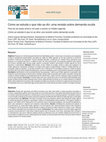
How do we study what is not said: a review on hidden agenda Objetivos: Pessoas com demandas apare... more How do we study what is not said: a review on hidden agenda Objetivos: Pessoas com demandas aparentemente bem delimitadas podem, muitas vezes, ter queixas ou preocupações ocultas ou tardiamente apresentadas, chamadas em inglês de hidden agenda, by the way syndrome ou doorknob syndrome (" síndrome da maçaneta "). Poucos trabalhos abordam o fenômeno em contexto clínico discutindo seus aspectos ou consequências sobre o cuidado do ponto de vista sociocultural. Uma pesquisa qualitativa sobre saúde dos homens realizada pelos autores exigiu estudar a produção científica relacionada à hidden agenda de forma descritiva e interpretativa. Métodos: Esta revisão, do tipo estado da questão, abarcou artigos que tratassem da hidden agenda (ou expressões similares) no contexto clínico geral ou especializado, médico ou multiprofissional, em português, inglês ou espanhol, no período de 2000 a 2014. Partindo de 210 resultados iniciais em 3 bases de dados internacionais, foram selecionadas 39 publicações, que foram avaliadas quanto a características objetivas e subjetivas. Resultados: Identificando os temas predominantes nas pesquisas, notamos que hidden agenda é a expressão mais específica, sendo demanda oculta sua melhor tradução. Quase todos os estudos relacionavam a atenção a demandas ocultas a melhores desfechos ou desdobramentos do atendimento, embora nenhum avaliasse essas consequências de forma aprofundada. Conclusão: A revisão deixa claro que a demanda oculta é um elemento problematizador para pensar a prática médica e potencializador para a clínica, especialmente ao buscar-se um cuidado integral e um diálogo efetivo entre profissional e usuário(a). São necessários estudos que articulem o fenômeno a aspectos socioculturais ou tecnoassistenciais e que contemplem alguma discussão sobre construção da demanda, ausente nos artigos revisados. Como citar: Modesto AAD, Couto MT. Como se estuda o que não se diz: uma revisão sobre demanda oculta. Rev Bras Med Fam Comunidade. 2016;11(38):1-13. http://dx.doi.org/10.5712/rbmfc11(38)1250 www.rbmfc.org.br ARTIGOS DE PESQUISAS Cómo se estudia lo que no se dice: una revisión sobre demanda oculta Objectives: People with apparently well-defined demands may often have hidden or lately presented complaints or concerns, called hidden agenda, by the way syndrome or doorknob syndrome. Few studies that address the phenomenon in a clinical context discuss aspects or consequences on the care from a sociocultural perspective. A qualitative research on men's health conducted by the authors required to study the scientific literature related to hidden agenda in a descriptive and interpretative way. Methods: This state of question review encompasses articles that addressed hidden agenda (or similar expressions) in general or specialized, medical or multidisciplinary clinical settings, in Portuguese, English or Spanish, from 2000 to 2014. Starting from 210 results from three international databases, we selected 39 publications, which were evaluated for objective and subjective characteristics. Results: Identifying the predominant subjects of the publications, we noticed that hidden agenda is the most specific term, being demanda oculta its best translation to Portuguese. Almost all studies related attention to hidden demands to better outcomes or results of care, although none of them evaluated those consequences in depth. Conclusions: The review makes it clear that hidden agenda is a problem-solving element to think about medical practice and an enhancer to the clinic, especially when looking for a comprehensive care and an effective dialogue between professional and user. Studies relating the phenomenon to sociocultural or healthcare service-related aspects are needed, as well as studies that include discussion about demand making, absent in the revised articles. Abstract Keywords: Physician-Patient Relations Communication Health Services Needs
Geração e categorias geracionais nas pesquisas sobre saúde e gênero no Brasil Generation and gene... more Geração e categorias geracionais nas pesquisas sobre saúde e gênero no Brasil Generation and generational categories in researches about health and gender in Brazil

The article explores the experience and meanings attributed by workers to change the port work in... more The article explores the experience and meanings attributed by workers to change the port work in the
Port of Santos/SP - Brazil process. Our focus are the changes implemented in the quotidian of occasional
workers, based on the new model of port management which is placed on assumptions of effectiveness
and efficiency aimed at improving the competitiveness in the sector. The study of qualitative research
developed in the area of the Port of Santos/SP. Representatives of different categories of port workers were
interviewed, a total of 31 people. The process of modernization undermines a work culture based on an
occasional system, collective and irregular, essentially male predominant and control regarding the work
process. The changes are expressed by revealing experiences of moral disruption arising from tensions
between the constituent elements of an identity of port workers and the new settings that regard this
specific work activity.
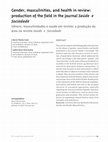
This article analyses the bibliographical production on the theme of gender, masculinities and he... more This article analyses the bibliographical production on the theme of gender, masculinities and health published in the journal Saúde e Sociedade. The method used was the literature review of narrative , of qualitative character, which addressed the search according to the descriptors " gender " and " masculinities " on all issues of the journal which are available in the SciELO system. 49 abstracts were selected for descriptive analysis; among these, 13 articles that focused on men and women or which used only men as subjects of analysis were analysed in depth. The narrative analysis of the articles and the comparison with the themes, objects and conceptual perspectives of the field of Public Health point to the expansion of the field of research on gender, masculinity and health, but also to the incipient character of conceptual approaches, especially regarding the intersectionality of gender and other social markers of difference, such as social class, generation and sexuality. This critical review evi-dences an expanding research field in terms of its strengths and weaknesses.

A (não) vacinação infantil entre a cultura e a lei: os significados atribuídos por casais de cama... more A (não) vacinação infantil entre a cultura e a lei: os significados atribuídos por casais de camadas médias de São Paulo, Brasil Culture versus the law in the decision not to vaccinate children: meanings assigned by middle-class couples in São Paulo, Brazil La (no)vacunación infantil entre la cultura y la ley: los significados atribuidos por parejas de clase media de São Paulo, Brasil Resumo O objetivo deste estudo foi compreender como pais de camadas médias de São Paulo, Brasil, significam as normatizações da vacinação no país, a partir de suas vivências de vacinar, selecionar ou não vacinar os filhos. Foi realizada abordagem qualitativa por meio de entrevista em profundidade. O processo analítico guiou-se pela análise de conteúdo e pelo referencial teórico da an-tropologia do direito e da moral. Para os pais vacinadores, a cultura de va-cinação se sobressaiu à percepção de cumprimento da lei; para os seletivos, a seleção de vacinas não foi percebida como ação desviante da lei. Em ambos, o ato de vacinar os filhos assumiu um status moral. Já os não vacinadores, em contraponto à perspectiva legal, atribuem essa escolha a um cuidado ao filho respaldado pela ilegitimidade que a vacinação assume para o modo de vida deles e vivenciam um cenário de coerção social e medo de imposições legais. A vacinação é uma prática importante no campo da Saúde Pública, porém, pode revelar tensões e conflitos oriundos de sistemas normativos, sejam eles de ordem moral, cultural ou legal. Este é um artigo publicado em acesso aberto (Open Access) sob a licença Creative Commons Attribution, que permite uso, distribuição e reprodu-ção em qualquer meio, sem restrições, desde que o trabalho original seja corretamente citado.
The HIV epidemic has not spread widely among heterosexuals in countries with medium to high per c... more The HIV epidemic has not spread widely among heterosexuals in countries with medium to high per capita income rates. To understand this phenomenon in Brazil, this article analyses data from a national survey to distinguish groups of heterosexually active men in relation to their risk of infection. The analysis used an odds ratio to estimate the chance of belonging to the group of greatest risk and factor analysis to understand patterns of masculinity. It was found that a pattern of restricted sexual behaviour (having a stable partner, a relatively reduced sexual network and infrequent extraconjugal activities) limited the spread of HIV. Fewer than 1 in 10 of men presented great risk of infection. The odds of belonging to this group rose according to sexual characteristics and cultural values. Men presenting a pattern of masculinity that showed
Creative Commons Non Commercial CC BY-NC: This article is distributed under the terms of the Crea... more Creative Commons Non Commercial CC BY-NC: This article is distributed under the terms of the Creative Commons Attribution-NonCommercial 4.0 License (http://www.creativecommons.org/licenses/by-nc/4.0/) which permits non-commercial use, reproduction and distribution of the work without further permission provided the original work is attributed as specified on the SAGE and Open Access pages (https://us.sagepub.com/en-us/nam/open-access-at-sage).








Uploads
Papers by Marcia Thereza Couto
Retrospective study evaluating 501 women who received nPEP between 2014 and 2015 at 5 HIV centers (testing centers-VCT, outpatient clinics, and infectious diseases hospital). Risk profiles were drawn based on the characteristics of the women and their sexual partners, and then stratified by sociodemographic indicators and previous use of HIV prevention services. Loss to follow-up (LTFU) was defined as not presenting for follow-up visits or for HIV testing after nPEP initiation. Predictors of LTFU were analyzed by calculating adjusted prevalence ratios (aPRs).
Approximately 90% of women had sexual encounters that met the criteria established in the Brazilian guidelines for nPEP. Those who declared to be sex workers (26.5%) or drug users (19.2%) had the highest social vulnerability indicators. In contrast, women who had intercourse with casual partners of unknown HIV risk (42.7%) had higher education and less experience with previous HIV testing (89.3%) or nPEP use (98.6%). Of the women who received nPEP after sexual intercourse with stable partners, 75.8% had HIV-infected partners. LTFU rate was 72.8% and predictors included being Black (aPR = 1.15, 95% confidence interval [CI]: 1.03–1.30), using drugs/alcohol (aPR = 1.15, 95% CI: 1.01–1.32) and having received nPEP at an HIV outpatient clinic (aPR = 1.35, 95% CI: 1.20–1.51) or at an infectious diseases hospital (aPR = 1.37, 95% CI: 1.11–1.69) compared with a VCT. The risk of LTFU declined as age increased (aPR 41–59 years = 0.80, 95% CI: 0.68–0.96).
Most women who used nPEP had higher socioeconomic status and were not part of populations most affected by HIV. In contrast, factors that contribute to loss to follow-up were: having increased social vulnerability; increased vulnerability to HIV infection; and seeking nPEP at HIV treatment services as opposed to at a VCT.
ABSTRACT Hegemonic masculinity has distanced heterosexually active men from the responses to the HIV epidemic. However, with the combined prevention paradigm, post-exposure prophylaxis offers new ways to manage the risks of HIV infection, while at the same time bringing about new challenges. The aim of this paper is to discuss-through the lens of gender and masculinities-how heterosexually active men perceive their HIV risk and how they manage prevention methods and strategies, including post-exposure prophylaxis. Employing qualitative methods, 16 heterosexually active men in five health services from different Brazilian cities were interviewed. The analysis indicates that condom use-the main prevention method-was conditioned by subjective and contextual factors, and its failure stands out as the primary reason for seeking out post-exposure prophylaxis. We argue that ideals of hegemonic masculinity permeate perceptions and risk management discourses in the current context of the HIV/AIDS epidemic.
Qualitative studies on HIV prevention strategies and methods among men who have sex with men (MSM) allow identify knowledge gaps and improve preventive actions.
Objective:
To make a thematic synthesis of the scientific productions that use the qualitative methodology in the strategies and methods of HIV prevention area among MSM.
Methods:
We conducted a literature review following the guidelines of the ENTREQ protocol. The analysis included 48 empirical studies published in Portuguese, English and Spanish between 2001 and 2018 available in the Medline, Embase, Scielo, Scopus, Bireme and Web of Science databases.
Results:
Where an increased production in the last six years and concentration in northern countries. Seven prevention methods were part of the study, with emphasis on pre-exposure prophylaxis, testing, condoms and behavioral strategies. The main topics discussed were stigma and support and care networks.
Conclusion:
we notice that an increasing production on prevention in the men who have sex with men segment results from the emergence of multiple preventive methods and strategies and their combined actions beyond the star role of condoms.
Retrospective study evaluating 501 women who received nPEP between 2014 and 2015 at 5 HIV centers (testing centers-VCT, outpatient clinics, and infectious diseases hospital). Risk profiles were drawn based on the characteristics of the women and their sexual partners, and then stratified by sociodemographic indicators and previous use of HIV prevention services. Loss to follow-up (LTFU) was defined as not presenting for follow-up visits or for HIV testing after nPEP initiation. Predictors of LTFU were analyzed by calculating adjusted prevalence ratios (aPRs).
Approximately 90% of women had sexual encounters that met the criteria established in the Brazilian guidelines for nPEP. Those who declared to be sex workers (26.5%) or drug users (19.2%) had the highest social vulnerability indicators. In contrast, women who had intercourse with casual partners of unknown HIV risk (42.7%) had higher education and less experience with previous HIV testing (89.3%) or nPEP use (98.6%). Of the women who received nPEP after sexual intercourse with stable partners, 75.8% had HIV-infected partners. LTFU rate was 72.8% and predictors included being Black (aPR = 1.15, 95% confidence interval [CI]: 1.03–1.30), using drugs/alcohol (aPR = 1.15, 95% CI: 1.01–1.32) and having received nPEP at an HIV outpatient clinic (aPR = 1.35, 95% CI: 1.20–1.51) or at an infectious diseases hospital (aPR = 1.37, 95% CI: 1.11–1.69) compared with a VCT. The risk of LTFU declined as age increased (aPR 41–59 years = 0.80, 95% CI: 0.68–0.96).
Most women who used nPEP had higher socioeconomic status and were not part of populations most affected by HIV. In contrast, factors that contribute to loss to follow-up were: having increased social vulnerability; increased vulnerability to HIV infection; and seeking nPEP at HIV treatment services as opposed to at a VCT.
Port of Santos/SP - Brazil process. Our focus are the changes implemented in the quotidian of occasional
workers, based on the new model of port management which is placed on assumptions of effectiveness
and efficiency aimed at improving the competitiveness in the sector. The study of qualitative research
developed in the area of the Port of Santos/SP. Representatives of different categories of port workers were
interviewed, a total of 31 people. The process of modernization undermines a work culture based on an
occasional system, collective and irregular, essentially male predominant and control regarding the work
process. The changes are expressed by revealing experiences of moral disruption arising from tensions
between the constituent elements of an identity of port workers and the new settings that regard this
specific work activity.
Retrospective study evaluating 501 women who received nPEP between 2014 and 2015 at 5 HIV centers (testing centers-VCT, outpatient clinics, and infectious diseases hospital). Risk profiles were drawn based on the characteristics of the women and their sexual partners, and then stratified by sociodemographic indicators and previous use of HIV prevention services. Loss to follow-up (LTFU) was defined as not presenting for follow-up visits or for HIV testing after nPEP initiation. Predictors of LTFU were analyzed by calculating adjusted prevalence ratios (aPRs).
Approximately 90% of women had sexual encounters that met the criteria established in the Brazilian guidelines for nPEP. Those who declared to be sex workers (26.5%) or drug users (19.2%) had the highest social vulnerability indicators. In contrast, women who had intercourse with casual partners of unknown HIV risk (42.7%) had higher education and less experience with previous HIV testing (89.3%) or nPEP use (98.6%). Of the women who received nPEP after sexual intercourse with stable partners, 75.8% had HIV-infected partners. LTFU rate was 72.8% and predictors included being Black (aPR = 1.15, 95% confidence interval [CI]: 1.03–1.30), using drugs/alcohol (aPR = 1.15, 95% CI: 1.01–1.32) and having received nPEP at an HIV outpatient clinic (aPR = 1.35, 95% CI: 1.20–1.51) or at an infectious diseases hospital (aPR = 1.37, 95% CI: 1.11–1.69) compared with a VCT. The risk of LTFU declined as age increased (aPR 41–59 years = 0.80, 95% CI: 0.68–0.96).
Most women who used nPEP had higher socioeconomic status and were not part of populations most affected by HIV. In contrast, factors that contribute to loss to follow-up were: having increased social vulnerability; increased vulnerability to HIV infection; and seeking nPEP at HIV treatment services as opposed to at a VCT.
ABSTRACT Hegemonic masculinity has distanced heterosexually active men from the responses to the HIV epidemic. However, with the combined prevention paradigm, post-exposure prophylaxis offers new ways to manage the risks of HIV infection, while at the same time bringing about new challenges. The aim of this paper is to discuss-through the lens of gender and masculinities-how heterosexually active men perceive their HIV risk and how they manage prevention methods and strategies, including post-exposure prophylaxis. Employing qualitative methods, 16 heterosexually active men in five health services from different Brazilian cities were interviewed. The analysis indicates that condom use-the main prevention method-was conditioned by subjective and contextual factors, and its failure stands out as the primary reason for seeking out post-exposure prophylaxis. We argue that ideals of hegemonic masculinity permeate perceptions and risk management discourses in the current context of the HIV/AIDS epidemic.
Qualitative studies on HIV prevention strategies and methods among men who have sex with men (MSM) allow identify knowledge gaps and improve preventive actions.
Objective:
To make a thematic synthesis of the scientific productions that use the qualitative methodology in the strategies and methods of HIV prevention area among MSM.
Methods:
We conducted a literature review following the guidelines of the ENTREQ protocol. The analysis included 48 empirical studies published in Portuguese, English and Spanish between 2001 and 2018 available in the Medline, Embase, Scielo, Scopus, Bireme and Web of Science databases.
Results:
Where an increased production in the last six years and concentration in northern countries. Seven prevention methods were part of the study, with emphasis on pre-exposure prophylaxis, testing, condoms and behavioral strategies. The main topics discussed were stigma and support and care networks.
Conclusion:
we notice that an increasing production on prevention in the men who have sex with men segment results from the emergence of multiple preventive methods and strategies and their combined actions beyond the star role of condoms.
Retrospective study evaluating 501 women who received nPEP between 2014 and 2015 at 5 HIV centers (testing centers-VCT, outpatient clinics, and infectious diseases hospital). Risk profiles were drawn based on the characteristics of the women and their sexual partners, and then stratified by sociodemographic indicators and previous use of HIV prevention services. Loss to follow-up (LTFU) was defined as not presenting for follow-up visits or for HIV testing after nPEP initiation. Predictors of LTFU were analyzed by calculating adjusted prevalence ratios (aPRs).
Approximately 90% of women had sexual encounters that met the criteria established in the Brazilian guidelines for nPEP. Those who declared to be sex workers (26.5%) or drug users (19.2%) had the highest social vulnerability indicators. In contrast, women who had intercourse with casual partners of unknown HIV risk (42.7%) had higher education and less experience with previous HIV testing (89.3%) or nPEP use (98.6%). Of the women who received nPEP after sexual intercourse with stable partners, 75.8% had HIV-infected partners. LTFU rate was 72.8% and predictors included being Black (aPR = 1.15, 95% confidence interval [CI]: 1.03–1.30), using drugs/alcohol (aPR = 1.15, 95% CI: 1.01–1.32) and having received nPEP at an HIV outpatient clinic (aPR = 1.35, 95% CI: 1.20–1.51) or at an infectious diseases hospital (aPR = 1.37, 95% CI: 1.11–1.69) compared with a VCT. The risk of LTFU declined as age increased (aPR 41–59 years = 0.80, 95% CI: 0.68–0.96).
Most women who used nPEP had higher socioeconomic status and were not part of populations most affected by HIV. In contrast, factors that contribute to loss to follow-up were: having increased social vulnerability; increased vulnerability to HIV infection; and seeking nPEP at HIV treatment services as opposed to at a VCT.
Port of Santos/SP - Brazil process. Our focus are the changes implemented in the quotidian of occasional
workers, based on the new model of port management which is placed on assumptions of effectiveness
and efficiency aimed at improving the competitiveness in the sector. The study of qualitative research
developed in the area of the Port of Santos/SP. Representatives of different categories of port workers were
interviewed, a total of 31 people. The process of modernization undermines a work culture based on an
occasional system, collective and irregular, essentially male predominant and control regarding the work
process. The changes are expressed by revealing experiences of moral disruption arising from tensions
between the constituent elements of an identity of port workers and the new settings that regard this
specific work activity.